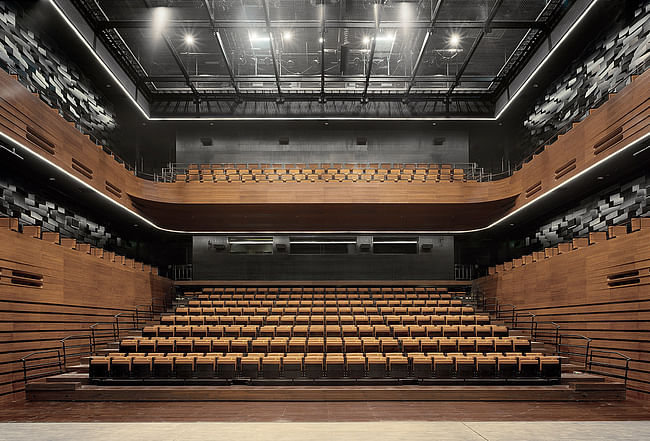Wuxi Grand Theatre by PES-Architects

The small auditorium as seen from stage. The 700 seats are partly retractable to enable a multifunctional usage of the space. (Photo: Jussi Tiainen)

The small auditorium as seen from stage. The 700 seats are partly retractable to enable a multifunctional usage of the space. (Photo: Jussi Tiainen)